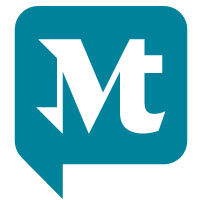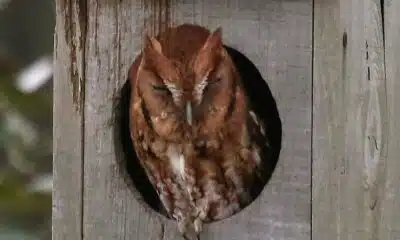Mississippi Today
My coffee-colored tap water went viral. I still don’t know what was in it.
My coffee-colored tap water went viral. I still don’t know what was in it.
On Friday, Sept. 9 – the 11th day of the water crisis in Jackson, Miss., and weeks into a citywide boil water notice – I went to brush my teeth.
I was at my apartment in Belhaven, one of the oldest and wealthiest neighborhoods in the majority-Black capital city. With the day off work, I had planned to drive to a suburb of Jackson to wash my clothes, thinking the laundromats in town were still affected by the crisis. Getting ready to leave, I turned on my bathroom sink faucet; for a second, the stream of water ran normally before it sputtered, lost pressure and turned a shockingly dark, coffee-colored brown.
My reaction was to turn off the faucet.
Earlier that week, I had seen a picture on Twitter of a bathtub, supposedly in Jackson, that was full of opaque, black water. Without more context, I had dismissed it as fake, but I wasn’t doubting anymore. I turned on my shower – it also sputtered before the water turned the same dark brown. I tried my sink again. Still brown. Then I flushed my toilet; it lurched away from the wall. I opened the lid to see chocolate-colored water slowly filling the bowl.
I took a video and posted it on Twitter with the caption, “My water just now in Jackson, MS.”
Within minutes, I was getting hundreds of retweets. That turned into dozens of direct messages, emails and phone calls from reporters around the world requesting to play the video on TV that night, and literally thousands of replies all asking the same question: What was in my water, and why was it that brown?
I had the same questions. Like all of my coworkers at Mississippi Today, I had been covering the crisis since it began on Aug. 29, but I wasn’t reporting on the condition of the water system or treatment plants.
Still, I thought I’d be well-suited to get the answers as a journalist. But more than two months later, I still don’t know what, exactly, was in my water, or why it turned brown. I've talked with experts in water quality and city officials – they gave different answers. The experts say that discolored water is a natural phenomenon in aging water systems, though the pipes in my building could've contributed. City officials are adamant my brown water was "an isolated incident," but we obtained records showing people across the city had experienced similar brown water during the height of the crisis.
The city also said they were going to test my water, but after weeks of back and forth with me, they admitted they never did.
But the first call I made that day was to my landlord’s front office. I wanted to know if other properties in Belhaven were affected or if my unit, a 1940s quadruplex, was the only one. Though the pipes in Belhaven are decades old, much of the neighborhood is downhill and nearby J.H. Fewell, the city’s secondary water plant – as a result, the homes here are often better able to weather water-related crises than those in other parts of the city.
The office manager answered the phone. Multiple properties were affected, she said. The water in Nejam Properties’ office in Belhaven Heights, a sister neighborhood on the hill across Fortification Street, was the color of “weak coffee.”
“That’s all to do with the city of Jackson and the boil water notice and stuff like that,” she said in a way that seemed intended to be reassuring.
Even before Gov. Tate Reeves declared the water emergency in a late-night press conference on Aug. 29, there was widespread confusion in Jackson about whether the water was safe to drink. Despite months of on-again, off-again boil water notices, many people, including myself, had been using the water normally. The mayor, Chokwe Antar Lumumba, had repeatedly questioned if the most recent boil water notice, which had been imposed by the state in July, was necessary.
This lack of clarity from both the city and the state continued throughout the crisis, making it hard for many Jacksonians to know what to trust. Reeves’ initial press conference did not include Lumumba or anyone from the city – and the very next day, Lumumba disputed several of Reeves’ comments, including an alarming statement that raw flood water had entered the O.B. Curtis treatment plant and was flowing into people’s homes.
In my apartment, the first clue as to what happened came a few hours after I posted the video. That afternoon, I learned my neighbor directly beneath me on the north side of the building had been getting brown water in his kitchen sink for a week if he used hot water. But on the south side, my neighbors still had clear water, albeit with low-pressure. An expert later told me this could indicate an issue with the pipes inside my section of the building – something my landlord, not the city, would be responsible for.
My water cleared up the day after I posted the video on Twitter, but it continued to gain views. By Monday, it had been watched more than 10 million times. That afternoon, I looked through my Twitter DMs.
One message stood out. It was a request from the City of Jackson’s account. They asked for my address so they could come test the water.
I could send it, I replied, but I wanted to know why they were asking.
“… If the water is that brown… we want to get the address to Public works and the health department to find the reason why,” they responded.
“Gotcha!” I wrote back before sending my address. Since I work from home, I said the city could come by any time.
“Ok…,” they wrote. “I'm going to give that address to our public works person… and hopefully they'll be able to determine what the heck is going on.”
After some back and forth, the city’s Twitter account asked if my water was still brown.
“Can we get a sample of it? (I'm asking per our public works director)”
The next morning, I ran into three city contractors on the sidewalk outside my apartment. They weren’t there to test my water but to install new meters.
I showed them the video. Gesturing down at the water meter, one of the contractors remarked that their work wouldn’t prevent the discolored water from happening again.
Jackson, he said, needs to re-pipe the whole city.
The exchange prompted me to check in with the city’s Twitter account.
“When do you think y’all will send someone over?” I asked at 9:42 a.m.
Six hours later, the city replied, “Hey Hey!!!! I think they went out there this morning…”
That was my last exchange with the city’s Twitter account, but I would learn – when I reached out to the city a month later – that Public Works never tested my water.
Meanwhile, at Mississippi Today, we were trying to do our own test of my water – an effort that proved fruitless.
Our health editor, Kate Royals, had been researching how to test water and found a private lab in Ridgeland, a suburb of Jackson, called Waypoint Analytical. We ultimately submitted three tests to Waypoint over the course of a month, for a total of $137.
The first sample, which I took the same day I posted the video, had puzzling results. That Friday afternoon, I talked to the lab manager who told me I needed to collect 100 milliliters of water and could put it in Tupperware, the only clean container I had at home. We had decided to test my water for E. coli and “total coliform,” a type of bacteria used to indicate the presence of pathogens.
The water was still dark and turbid when I turned it into the lab, but the results they sent us a few days later showed the water was too dark to test.
“The sample could not be read for Total Coliform due to the dark coloration of the sample interfering with the Reading,” the results said.
So six days later, the day the boil water notice was lifted, we tried again.
The second test came back with high levels of total coliform but no E. coli. But I had committed two possible user errors. One, my Tupperware container might’ve introduced bacteria into the sample. Two, I didn’t flush out the line by running the bathroom sink faucet before taking the sample, the water-testing protocol generally recommended by the Environmental Protection Agency.
Nearly another month passed before we could get a third and final test. This time, I got more guidelines from the lab and followed them to a tee, cleaning my faucet with bleach (which yielded more brown sediment) and running the water for one minute before collecting it in a sterile container and placing it in a bag of ice.
It came back with no bacteria detected. But that's not the full story.
One expert I later consulted, Francis de los Reyes – a professor of environmental engineering and microbiology at North Carolina State University – suggested that because the lab’s test required re-growing bacteria, the bleach I had used on the faucet could've lingered in the water, killing any organisms that might’ve been present. He said I should’ve run the tap for longer than one minute to clear the bleach.
So what was in my brown water, and why did it happen? Other experts I talked to could only speculate. De los Reyes’ colleague, Detlef Knappe, who specializes in water quality and treatment, told me that because there was likely no E. coli in my water, the brown color was probably the “natural” result of a drop in pressure in the old pipes.
In a functioning water system, Knappe explained, generators push waterfrom the plant to homes, where it stays suspended in the pipes until a faucet is turned on. But in old water systems like Jackson’s, lined with cast iron pipes, a drop in pressure can cause accumulated sediment to collapse into the disrupted water stream and turn it brown. The water isn’t leaving the plant a dark brown color, Knappe said, but becomes discolored somewhere along its journey to the faucet.
Christine Kirschoff, a professor of civil and environmental engineering at Penn State University, had another perspective. Though she agreed that the brown water was likely caused by a drop of pressure in the pipes, she said it could’ve been exacerbated by the routing of the pipes in my building. That scenario would explain why my downstairs neighbor also had discolored water but my neighbors to the south never did.
The last week of September, I went on vacation and promptly got food poisoning. I would later learn that as I was laid up on my couch – subsisting on chicken nuggets and Uncrustables and using up the last of the bottled water I’d bought the first week of the crisis – the mayor had commented on my water at a town hall the same week.
A recording of the town hall at the New Jerusalem South Church on Sept. 27 shows Lumumba, microphone in hand, standing in front of poster boards of graphs, pictures of O.B. Curtis and a spreadsheet labeled “IMMEDIATE NEEDS.” He starts talking about my water around the 12-minute mark in a tangent about re-watching an interview he gave on national TV.
By now, my tweet had helped shape the national perception of Jackson’s water crisis.
“I was upset, because I did an interview," Lumumba said. "And y’all know when I do these interviews, I can't see the packages they're running, I can't see the images that they're running in the background – all I see is a blank screen. And they keep showing this black water coming out of a faucet, right?”
My water, Lumumba went on to say, represented an “extremely rare situation” issue at “one isolated building.”
“That is not what is coming out of your water treatment facility, right?” he said. “You're not having black water going to every resident. Y'all – y'all live in Jackson. Y’all – how many times have you seen a black water come out of your faucet? Right? I have residents tell me time and time again that they don’t know where that was, right?”
For me, this raised several new questions. Did the city actually send anyone to test my water? How were they able to determine the brown water was isolated to my building? What other discussions did they have about my water? Why didn’t the city reach out to me with their conclusion?
On Oct. 13, I sent an email asking if the city had tested my water to Melissa Faith Payne, the city’s public information officer.
“I believe the discolored water at your building was an isolated incident … and not indicative of the water that actually comes from the plant,” she responded the next day. “I think it had more to do with the lines/pipes at your building. I'll Loop our public works team in to get more information for you.”
I followed up. What was the mayor’s basis for his comments at the town hall? If it was easier, I suggested, I would be happy to talk with the Public Works employee that tested my water.
“I briefed the Mayor just before the town hall,” Payne replied, adding that she was still waiting on an answer from Public Works.
About a week later, I got a statement from Jordan Hillman, the interim director of Public Works. The department could not make any employees available for an interview, she said, due to the workload of maintaining the water system, but Hillman did explain why the city thought my water was an isolated incident.
“This incident was indicative of a local pipe issue for a variety of reasons including knowledge of water condition leaving plants, water color at nearby fire hydrants, and experience with similar issues,” Hillman said. “There were extremely limited reports of similar water discoloration through our report tool.”
The tool that Hillman is referring to is an online survey the city created for residents to report the color of their water. My coworker Alex Rozier, who has been covering the crisis closely, recommended I fill it out the same day I posted the video.
I asked the experts what they thought of Hillman’s reply.
Knappe, the NC State professor, told me that the water from a fire hydrant isn’t necessarily representative of the color of water inside a home, because the pressure and speed at which water comes out of a hydrant is much greater than a faucet. Kirschoff said that it depends on where the fire hydrant that the city examined was located relative to my apartment.
Unsatisfied, I put in several public records requests. I asked for copies of any communications about my water, which the city has only partially fulfilled.
After a few more days of inquiries, Hillman finally told me that “no samples were taken from your specific home or area at that time.”
I also asked for responses to the report tool. Despite the fact that the mayor said my experience was an “extremely rare situation,” the submissions from other Jacksonian detailing discolored water seem to say otherwise. Out of565 responses, including mine, to the form since Aug. 29, 423 – or 74% – reported discolored water. The submissions came from across the city but about a third were concentrated in northeast Jackson.(We did not filter duplicates from this count.)
Responses from more than 20 people, a little more than 4%, contained descriptions of brown, gritty water that matched what I had seen in my home. Though far more people used the word "brown" to describe their water, I couldn't tell if their report matched my experience because the city was supposed to send me pictures that had been uploaded in response to the form but hasn't.
“Reddish brown water in both toilets strong enough to leave a brown ring,” one person wrote.
“When I boil my water it turn my pot brown inside my bath water have dirt in it,” another person said.
“My water is brown and leaves deposits of dirt..” a third submitted.
I asked Hillman and Payne why the city thought these responses were "extremely limited" on Nov. 4 but I haven't heard back.
More than two months after my water turned brown, I haven't had an issue. I've gone back to using my water to cook, wash my dishes, and brush my teeth, but every morning, I see reminders and warnings – representations of what could happen again. The grainy water left permanent, hair dye-like splotches on my toilet bowl, bathtub, and sink basin. Now, I always run my water for one minute before I use it.
The city and state seem to have returned to the contentious relationship that preceded the crisis, with both sides accusing the other of providing incorrect information, which only further weakens public confidence in the system.
There's no sign this will change. As winter sets in, raising the possibility that another freeze could shut down the system, the state is considering if it will lift the emergency declaration. Multiple lawsuits have been filed. And though it’ll become public soon, just last week, the city inked an agreement with the federal government to fix the water system – in secret.
This article first appeared on Mississippi Today and is republished here under a Creative Commons license.
Mississippi Today
Presidents are taking longer to declare major natural disasters. For some, the wait is agonizing
TYLERTOWN — As an ominous storm approached Buddy Anthony’s one-story brick home, he took shelter in his new Ford F-250 pickup parked under a nearby carport.
Seconds later, a tornado tore apart Anthony’s home and damaged the truck while lifting it partly in the air. Anthony emerged unhurt. But he had to replace his vehicle with a used truck that became his home while waiting for President Donald Trump to issue a major disaster declaration so that federal money would be freed for individuals reeling from loss. That took weeks.
“You wake up in the truck and look out the windshield and see nothing. That’s hard. That’s hard to swallow,” Anthony said.
Disaster survivors are having to wait longer to get aid from the federal government, according to a new Associated Press analysis of decades of data. On average, it took less than two weeks for a governor’s request for a presidential disaster declaration to be granted in the 1990s and early 2000s. That rose to about three weeks during the past decade under presidents from both major parties. It’s taking more than a month, on average, during Trump’s current term, the AP found.
The delays mean individuals must wait to receive federal aid for daily living expenses, temporary lodging and home repairs. Delays in disaster declarations also can hamper recovery efforts by local officials uncertain whether they will receive federal reimbursement for cleaning up debris and rebuilding infrastructure. The AP collaborated with Mississippi Today and Mississippi Free Press on the effects of these delays for this report.
“The message that I get in the delay, particularly for the individual assistance, is that the federal government has turned its back on its own people,” said Bob Griffin, dean of the College of Emergency Preparedness, Homeland Security and Cybersecurity at the University at Albany in New York. “It’s a fundamental shift in the position of this country.”
The wait for disaster aid has grown as Trump remakes government
The Federal Emergency Management Agency often consults immediately with communities to coordinate their initial disaster response. But direct payments to individuals, nonprofits and local governments must wait for a major disaster declaration from the president, who first must receive a request from a state, territory or tribe. Major disaster declarations are intended only for the most damaging events that are beyond the resources of states and local governments.
Trump has approved more than two dozen major disaster declarations since taking office in January, with an average wait of almost 34 days after a request. That ranged from a one-day turnaround after July’s deadly flash flooding in Texas to a 67-day wait after a request for aid because of a Michigan ice storm. The average wait is up from a 24-day delay during his first term and is nearly four times as long as the average for former Republican President George H.W. Bush, whose term from 1989-1993 coincided with the implementation of a new federal law setting parameters for disaster determinations.
The delays have grown over time, regardless of the party in power. Former Democratic President Joe Biden, in his last year in office, averaged 26 days to declare major disasters — longer than any year under former Democratic President Barack Obama.
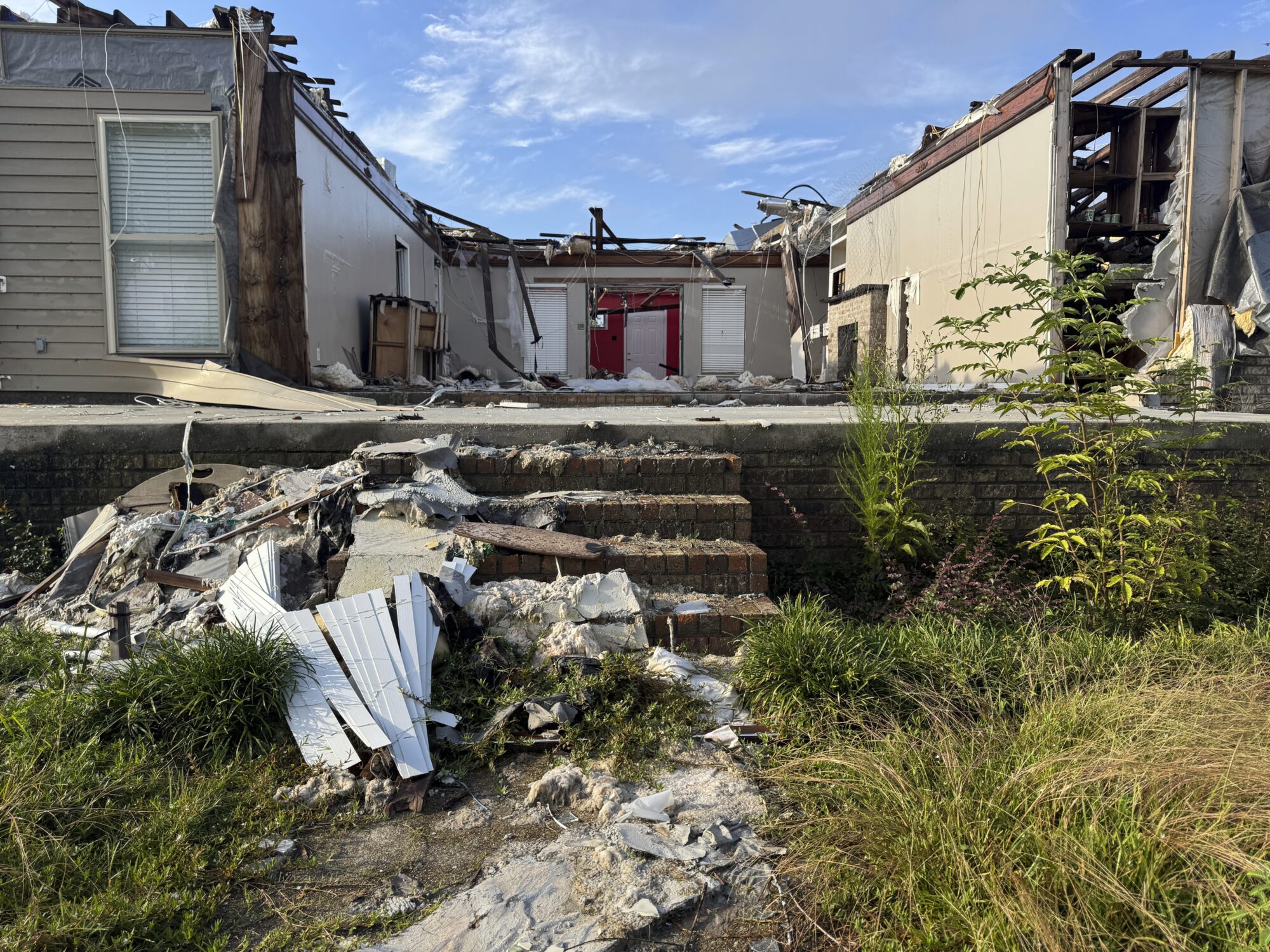
FEMA did not respond to the AP’s questions about what factors are contributing to the trend.
Others familiar with FEMA noted that its process for assessing and documenting natural disasters has become more complex over time. Disasters have also become more frequent and intense because of climate change, which is mostly caused by the burning of fuels such as gas, coal and oil.
The wait for disaster declarations has spiked as Trump’s administration undertakes an ambitious makeover of the federal government that has shed thousands of workers and reexamined the role of FEMA. A recently published letter from current and former FEMA employees warned the cuts could become debilitating if faced with a large-enough disaster. The letter also lamented that the Trump administration has stopped maintaining or removed long-term planning tools focused on extreme weather and disasters.
Shortly after taking office, Trump floated the idea of “getting rid” of FEMA, asserting: “It’s very bureaucratic, and it’s very slow.”
FEMA’s acting chief suggested more recently that states should shoulder more responsibility for disaster recovery, though FEMA thus far has continued to cover three-fourths of the costs of public assistance to local governments, as required under federal law. FEMA pays the full cost of its individual assistance.
Former FEMA Administrator Pete Gaynor, who served during Trump’s first term, said the delay in issuing major disaster declarations likely is related to a renewed focus on making sure the federal government isn’t paying for things state and local governments could handle.
“I think they’re probably giving those requests more scrutiny,” Gaynor said. “And I think it’s probably the right thing to do, because I think the (disaster) declaration process has become the ‘easy button’ for states.”
The Associated Press on Monday received a statement from White House spokeswoman Abigail Jackson in response to a question about why it is taking longer to issue major natural disaster declarations:
“President Trump provides a more thorough review of disaster declaration requests than any Administration has before him. Gone are the days of rubber stamping FEMA recommendations – that’s not a bug, that’s a feature. Under prior Administrations, FEMA’s outsized role created a bloated bureaucracy that disincentivized state investment in their own resilience. President Trump is committed to right-sizing the Federal government while empowering state and local governments by enabling them to better understand, plan for, and ultimately address the needs of their citizens. The Trump Administration has expeditiously provided assistance to disasters while ensuring taxpayer dollars are spent wisely to supplement state actions, not replace them.”
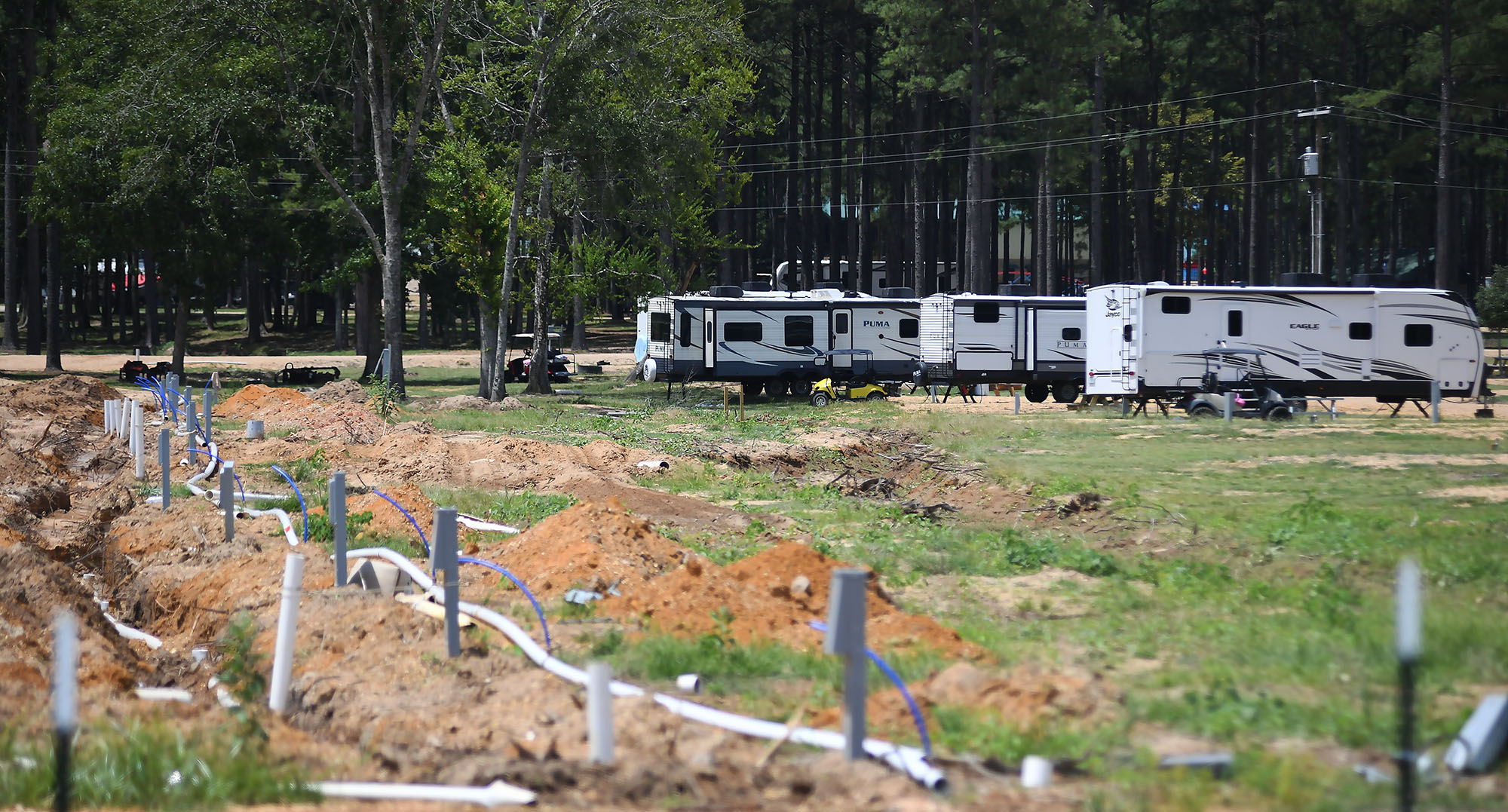
In Mississippi, frustration festered during wait for aid
The tornado that struck Anthony’s home in rural Tylertown on March 15 packed winds up to 140 mph. It was part of a powerful system that wrecked homes, businesses and lives across multiple states.
Mississippi’s governor requested a federal disaster declaration on April 1. Trump granted that request 50 days later, on May 21, while approving aid for both individuals and public entities.
On that same day, Trump also approved eight other major disaster declarations for storms, floods or fires in seven other states. In most cases, more than a month had passed since the request and about two months since the date of those disasters.
If a presidential declaration and federal money had come sooner, Anthony said he wouldn’t have needed to spend weeks sleeping in a truck before he could afford to rent the trailer where he is now living. His house was uninsured, Anthony said, and FEMA eventually gave him $30,000.
In nearby Jayess in Lawrence County, Dana Grimes had insurance but not enough to cover the full value of her damaged home. After the eventual federal declaration, Grimes said FEMA provided about $750 for emergency expenses, but she is now waiting for the agency to determine whether she can receive more.

“We couldn’t figure out why the president took so long to help people in this country,” Grimes said. “I just want to tie up strings and move on. But FEMA — I’m still fooling with FEMA.”
Jonathan Young said he gave up on applying for FEMA aid after the Tylertown tornado killed his 7-year-old son and destroyed their home. The process seemed too difficult, and federal officials wanted paperwork he didn’t have, Young said. He made ends meet by working for those cleaning up from the storm.
“It’s a therapy for me,” Young said, “to pick up the debris that took my son away from me.”
Historically, presidential disaster declarations containing individual assistance have been approved more quickly than those providing assistance only to public entities, according to the AP’s analysis. That remains the case under Trump, though declarations for both types are taking longer.
About half the major disaster declarations approved by Trump this year have included individual assistance.
Some people whose homes are damaged turn to shelters hosted by churches or local nonprofit organizations in the initial chaotic days after a disaster. Others stay with friends or family or go to a hotel, if they can afford it.
But some insist on staying in damaged homes, even if they are unsafe, said Chris Smith, who administered FEMA’s individual assistance division under three presidents from 2015-2022. If homes aren’t repaired properly, mold can grow, compounding the recovery challenges.
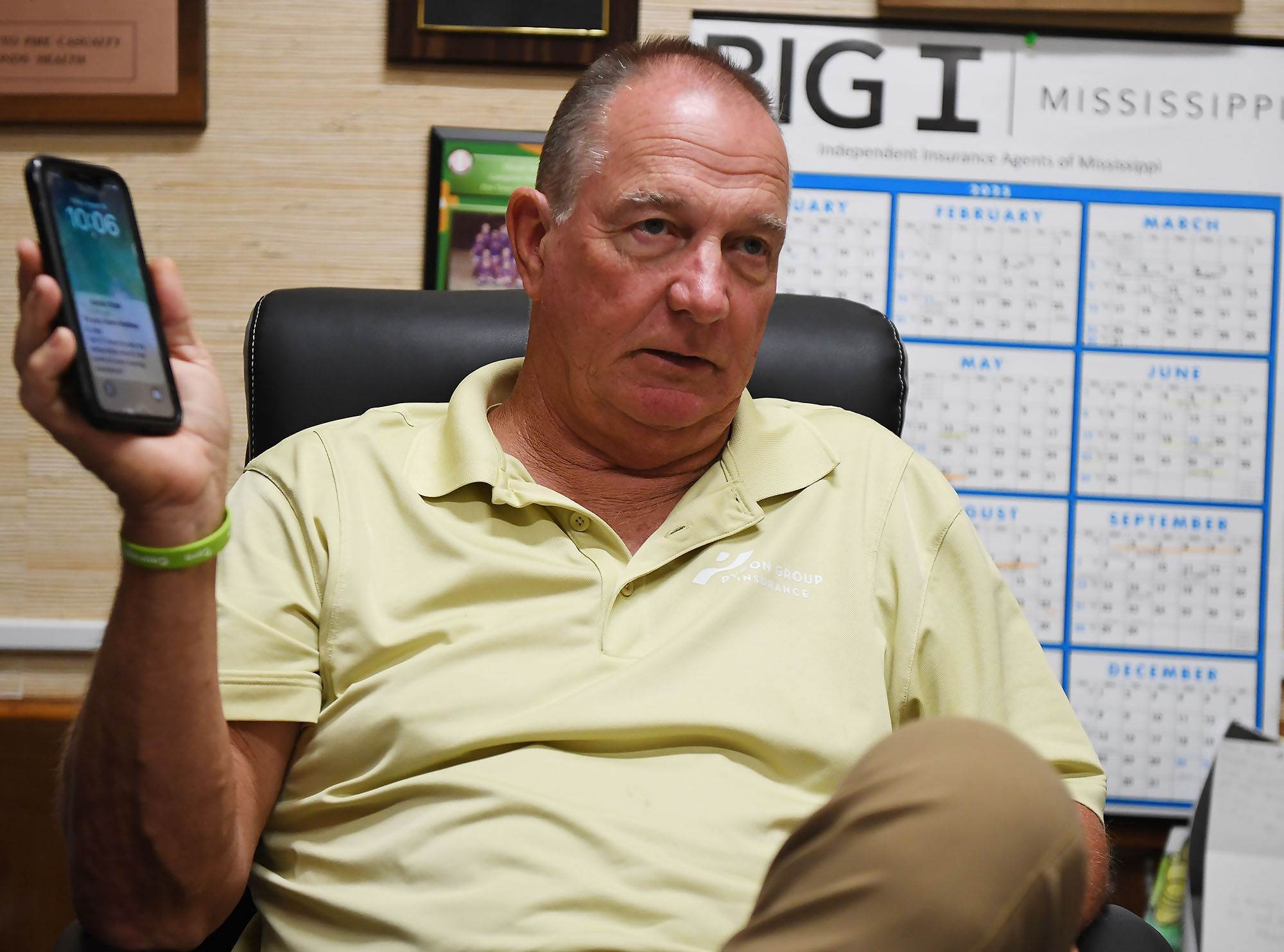
That’s why it’s critical for FEMA’s individual assistance to get approved quickly — ideally, within two weeks of a disaster, said Smith, who’s now a disaster consultant for governments and companies.
“You want to keep the people where they are living. You want to ensure those communities are going to continue to be viable and recover,” Smith said. “And the earlier that individual assistance can be delivered … the earlier recovery can start.”
In the periods waiting for declarations, the pressure falls on local officials and volunteers to care for victims and distribute supplies.
In Walthall County, where Tylertown is, insurance agent Les Lampton remembered watching the weather news as the first tornado missed his house by just an eighth of a mile. Lampton, who moonlights as a volunteer firefighter, navigated the collapsed trees in his yard and jumped into action. About 45 minutes later, the second tornado hit just a mile away.
“It was just chaos from there on out,” Lampton said.
Walthall County, with a population of about 14,000, hasn’t had a working tornado siren in about 30 years, Lampton said. He added there isn’t a public safe room in the area, although a lot of residents have ones in their home.
Rural areas with limited resources are hit hard by delays in receiving funds through FEMA’s public assistance program, which, unlike individual assistance, only reimburses local entities after their bills are paid. Long waits can stoke uncertainty and lead cost-conscious local officials to pause or scale-back their recovery efforts.

In Walthall County, officials initially spent about $700,000 cleaning up debris, then suspended the cleanup for more than a month because they couldn’t afford to spend more without assurance they would receive federal reimbursement, said county emergency manager Royce McKee. Meanwhile, rubble from splintered trees and shattered homes remained piled along the roadside, creating unsafe obstacles for motorists and habitat for snakes and rodents.
When it received the federal declaration, Walthall County took out a multimillion-dollar loan to pay contractors to resume the cleanup.
“We’re going to pay interest and pay that money back until FEMA pays us,” said Byran Martin, an elected county supervisor. “We’re hopeful that we’ll get some money by the first of the year, but people are telling us that it could be [longer].”
Lampton, who took after his father when he joined the volunteer firefighters 40 years ago, lauded the support of outside groups such as Cajun Navy, Eight Days of Hope, Samaritan’s Purse and others. That’s not to mention the neighbors who brought their own skid steers and power saws to help clear trees and other debris, he added.
“That’s the only thing that got us through this storm, neighbors helping neighbors,” Lampton said. “If we waited on the government, we were going to be in bad shape.”
Lieb reported from Jefferson City, Missouri, and Wildeman from Hartford, Connecticut.
Update 98/25: This story has been updated to include a White House statement released after publication.
This article first appeared on Mississippi Today and is republished here under a Creative Commons Attribution-NoDerivatives 4.0 International License.
The post Presidents are taking longer to declare major natural disasters. For some, the wait is agonizing appeared first on mississippitoday.org
Note: The following A.I. based commentary is not part of the original article, reproduced above, but is offered in the hopes that it will promote greater media literacy and critical thinking, by making any potential bias more visible to the reader –Staff Editor.
Political Bias Rating: Center-Left
This article presents a critical view of the Trump administration’s handling of disaster declarations, highlighting delays and their negative impacts on affected individuals and communities. It emphasizes concerns about government downsizing and reduced federal support, themes often associated with center-left perspectives that favor robust government intervention and social safety nets. However, it also includes statements from Trump administration officials defending their approach, providing some balance. Overall, the tone and framing lean slightly left of center without being overtly partisan.
Mississippi Today
Northeast Mississippi speaker and worm farmer played key role in Coast recovery after Hurricane Katrina
The 20th anniversary of Hurricane Katrina slamming the Mississippi Gulf Coast has come and gone, rightfully garnering considerable media attention.
But still undercovered in the 20th anniversary saga of the storm that made landfall on Aug. 29, 2005, and caused unprecedented destruction is the role that a worm farmer from northeast Mississippi played in helping to revitalize the Coast.
House Speaker Billy McCoy, who died in 2019, was a worm farmer from the Prentiss, not Alcorn County, side of Rienzi — about as far away from the Gulf Coast as one could be in Mississippi.
McCoy grew other crops, but a staple of his operations was worm farming.
Early after the storm, the House speaker made a point of touring the Coast and visiting as many of the House members who lived on the Coast as he could to check on them.
But it was his action in the forum he loved the most — the Mississippi House — that is credited with being key to the Coast’s recovery.
Gov. Haley Barbour had called a special session about a month after the storm to take up multiple issues related to Katrina and the Gulf Coast’s survival and revitalization. The issue that received the most attention was Barbour’s proposal to remove the requirement that the casinos on the Coast be floating in the Mississippi Sound.
Katrina wreaked havoc on the floating casinos, and many operators said they would not rebuild if their casinos had to be in the Gulf waters. That was a crucial issue since the casinos were a major economic engine on the Coast, employing an estimated 30,000 in direct and indirect jobs.
It is difficult to fathom now the controversy surrounding Barbour’s proposal to allow the casinos to locate on land next to the water. Mississippi’s casino industry that was birthed with the early 1990s legislation was still new and controversial.
Various religious groups and others had continued to fight and oppose the casino industry and had made opposition to the expansion of gambling a priority.
Opposition to casinos and expansion of casinos was believed to be especially strong in rural areas, like those found in McCoy’s beloved northeast Mississippi. It was many of those rural areas that were the homes to rural white Democrats — now all but extinct in the Legislature but at the time still a force in the House.
So, voting in favor of casino expansion had the potential of being costly for what was McCoy’s base of power: the rural white Democrats.
Couple that with the fact that the Democratic-controlled House had been at odds with the Republican Barbour on multiple issues ranging from education funding to health care since Barbour was inaugurated in January 2004.
Barbour set records for the number of special sessions called by the governor. Those special sessions often were called to try to force the Democratic-controlled House to pass legislation it killed during the regular session.
The September 2005 special session was Barbour’s fifth of the year. For context, current Gov. Tate Reeves has called four in his nearly six years as governor.
There was little reason to expect McCoy to do Barbour’s bidding and lead the effort in the Legislature to pass his most controversial proposal: expanding casino gambling.
But when Barbour ally Lt. Gov. Amy Tuck, who presided over the Senate, refused to take up the controversial bill, Barbour was forced to turn to McCoy.
The former governor wrote about the circumstances in an essay he penned on the 20th anniversary of Hurricane Katrina for Mississippi Today Ideas.
“The Senate leadership, all Republicans, did not want to go first in passing the onshore casino law,” Barbour wrote. “So, I had to ask Speaker McCoy to allow it to come to the House floor and pass. He realized he should put the Coast and the state’s interests first. He did so, and the bill passed 61-53, with McCoy voting no.
“I will always admire Speaker McCoy, often my nemesis, for his integrity in putting the state first.”
Incidentally, former Rep. Bill Miles of Fulton, also in northeast Mississippi, was tasked by McCoy with counting, not whipping votes, to see if there was enough support in the House to pass the proposal. Not soon before the key vote, Miles said years later, he went to McCoy and told him there were more than enough votes to pass the legislation so he was voting no and broached the idea of the speaker also voting no.
It is likely that McCoy would have voted for the bill if his vote was needed.
Despite his no vote, the Biloxi Sun Herald newspaper ran a large photo of McCoy and hailed the Rienzi worm farmer as a hero for the Mississippi Gulf Coast.
This article first appeared on Mississippi Today and is republished here under a Creative Commons Attribution-NoDerivatives 4.0 International License.
The post Northeast Mississippi speaker and worm farmer played key role in Coast recovery after Hurricane Katrina appeared first on mississippitoday.org
Note: The following A.I. based commentary is not part of the original article, reproduced above, but is offered in the hopes that it will promote greater media literacy and critical thinking, by making any potential bias more visible to the reader –Staff Editor.
Political Bias Rating: Centrist
The article presents a factual and balanced account of the political dynamics surrounding Hurricane Katrina recovery efforts in Mississippi, focusing on bipartisan cooperation between Democratic and Republican leaders. It highlights the complexities of legislative decisions without overtly favoring one party or ideology, reflecting a neutral and informative tone typical of centrist reporting.
Mississippi Today
PSC moves toward placing Holly Springs utility into receivership
NEW ALBANY — After five hours in a courtroom where attendees struggled to find standing room, the Mississippi Public Service Commission voted to petition a judge to put the Holly Springs Utility Department into a receivership.
The PSC held the hearing Thursday about a half hour drive west from Holly Springs in New Albany, known as “The Fair and Friendly City.” Throughout the proceedings, members of the PSC, its consultants and Holly Springs officials emphasized there was no precedent for what was going on.
The city of Holly Springs has provided electricity through a contract with the Tennessee Valley Authority since 1935. It serves about 12,000 customers, most of whom live outside the city limits. While current and past city officials say the utility’s issues are a result of financial negligence over many years, the service failures hit a boiling point during a 2023 ice storm where customers saw outages that lasted roughly two weeks as well as power surges that broke their appliances.
Those living in the service area say those issues still occur periodically, in addition to infrequent and inaccurate billing.
“I moved to Marshall County in 2020 as a place for retirement for my husband and I, and it’s been a nightmare for five years,” customer Monica Wright told the PSC at Thursday’s hearing. “We’ve replaced every electronic device we own, every appliance, our well pump and our septic pumps. It has financially broke us.
“We’re living on prayers and promises, and we need your help today.”
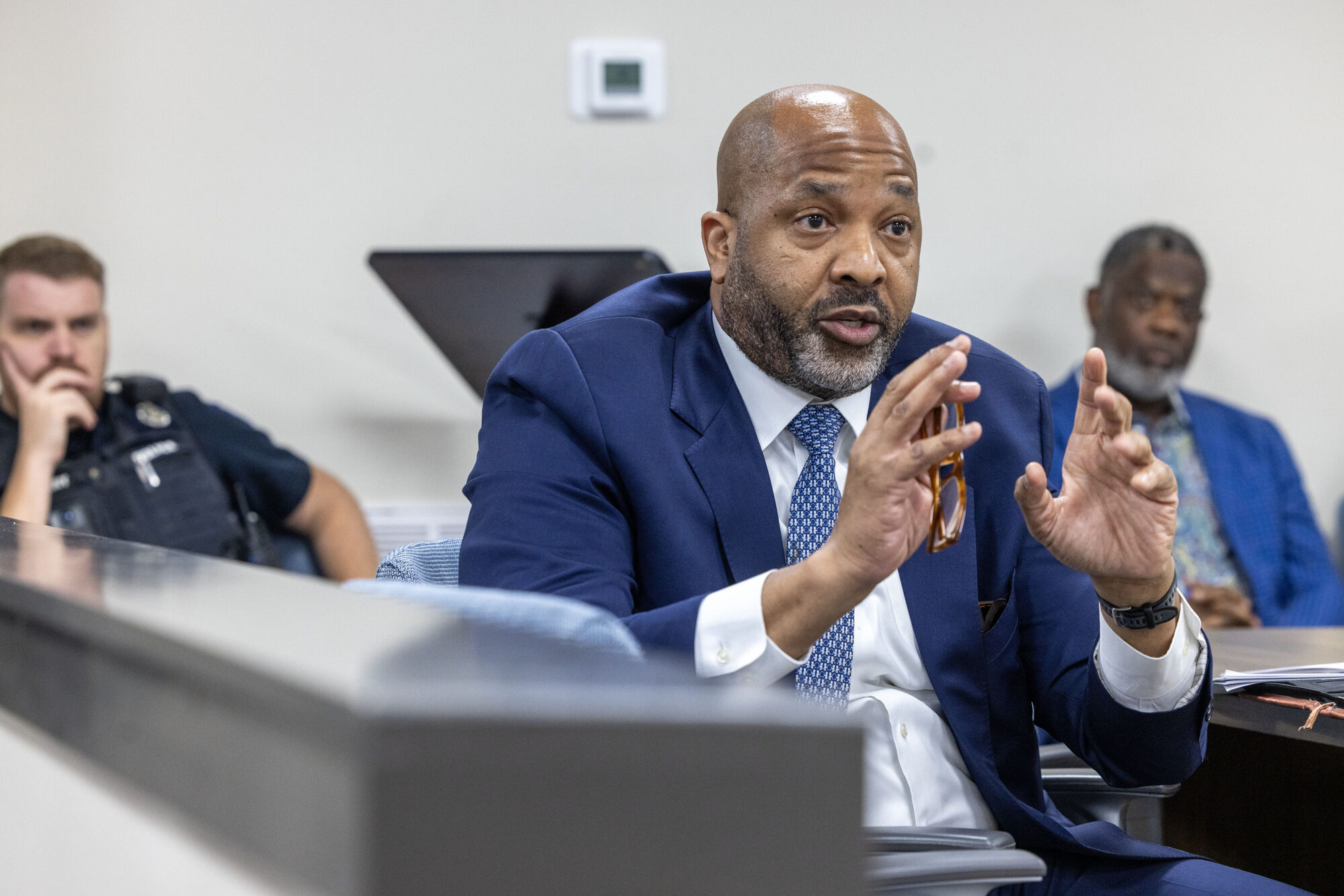
Another customer, Roscoe Sitgger of Michigan City, said he recently received a series of monthly bills between $500 and $600.
Following a scathing July report by Silverpoint Consulting that found Holly Springs is “incapable” of running the utility, the three-member PSC voted unanimously on Thursday to determine the city isn’t providing “reasonably adequate service” to its customers. That language comes from a 2024 state bill that gave the commission authority to investigate the utility.
The bill gives a pathway for temporarily removing the utility’s control from the city, allowing the PSC to petition a chancery judge to place the department into the hands of a third party. The PSC voted unanimously to do just that.

Thursday’s hearing gave the commission its first chance to direct official questions at Holly Springs representatives. Newly elected Mayor Charles Terry, utility General Manager Wayne Jones and City Attorney John Keith Perry fielded an array of criticism from the PSC. In his rebuttal, Perry suggested that any solution — whether a receivership or selling the utility — would take time to implement, and requested 24 months for the city to make incremental improvements. Audience members shouted, “No!” as Perry spoke.
“We are in a crisis now,” responded Northern District Public Service Commissioner Chris Brown. “To try to turn the corner in incremental steps is going to be almost impossible.”
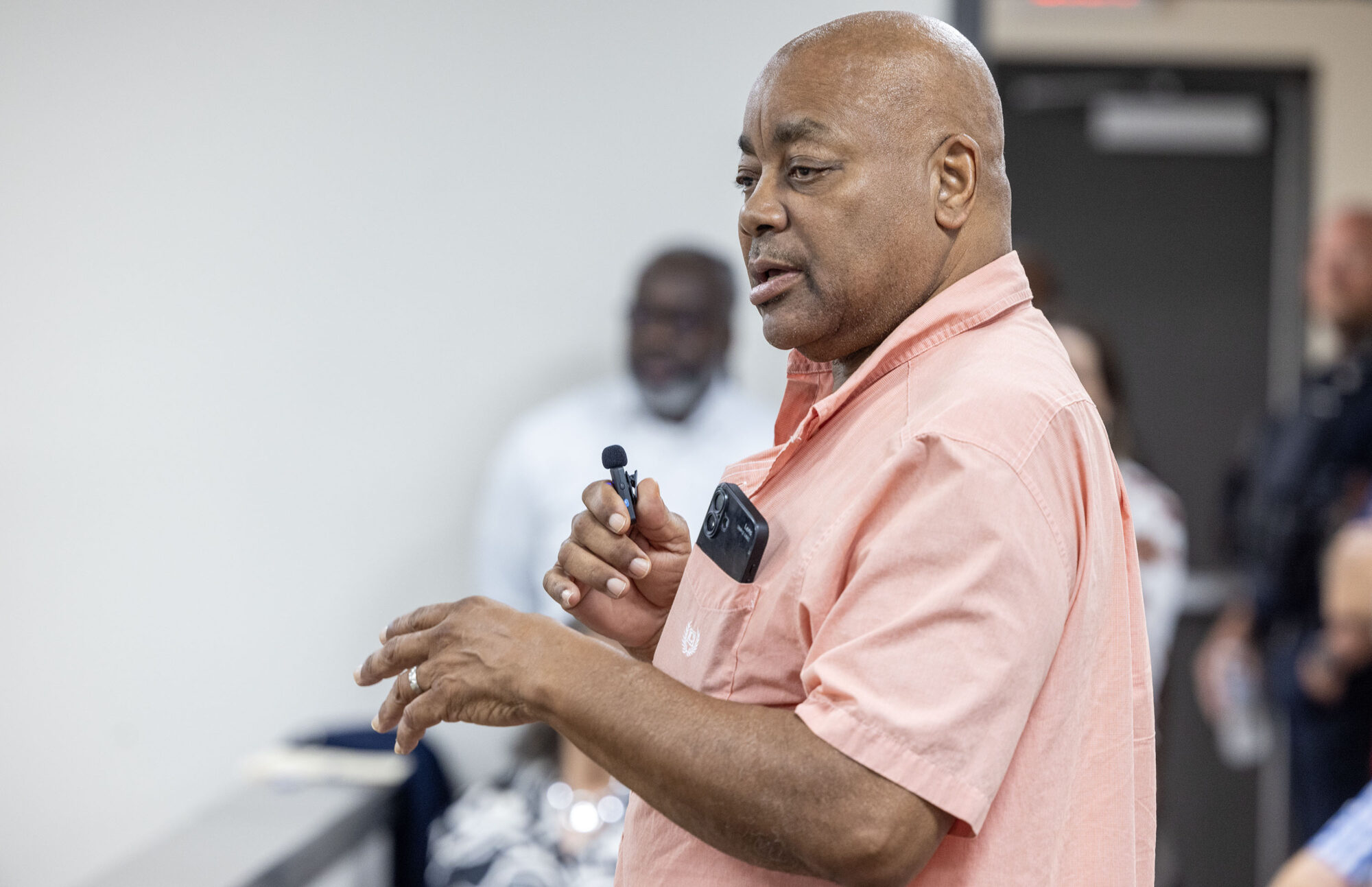
It’s unclear how much it would cost to fix the department’s long list of ailments. In 2023, TVPPA — a nonprofit that represents TVA’s local partners — estimated Holly Springs needs over $10 million just to restore its rights-of-way, and as much as $15 million to fix its substations. The department owes another $10 million in debt to TVA as well as its contractors, Brown said.
“The city is holding back the growth of the county,” said Republican Sen. Neil Whaley of Potts Camp, who passionately criticized the Holly Springs officials sitting a few feet away. “You’ve got to do better, you’ve got to realize you’re holding these people hostage, and it’s not right and it’s not fair… They are being represented by people who do not care about them as long as the bill is paid.”
In determining next steps, Silverpoint Principal Stephanie Vavro told the PSC it may be hard to find someone willing to serve as receiver for the utility department, make significant investments and then hand the keys back to the city. The 2024 bill, Vavro said, doesn’t limit options to a receivership, and alternatives could include condemning the utility or finding a nearby utility to buy the service area.
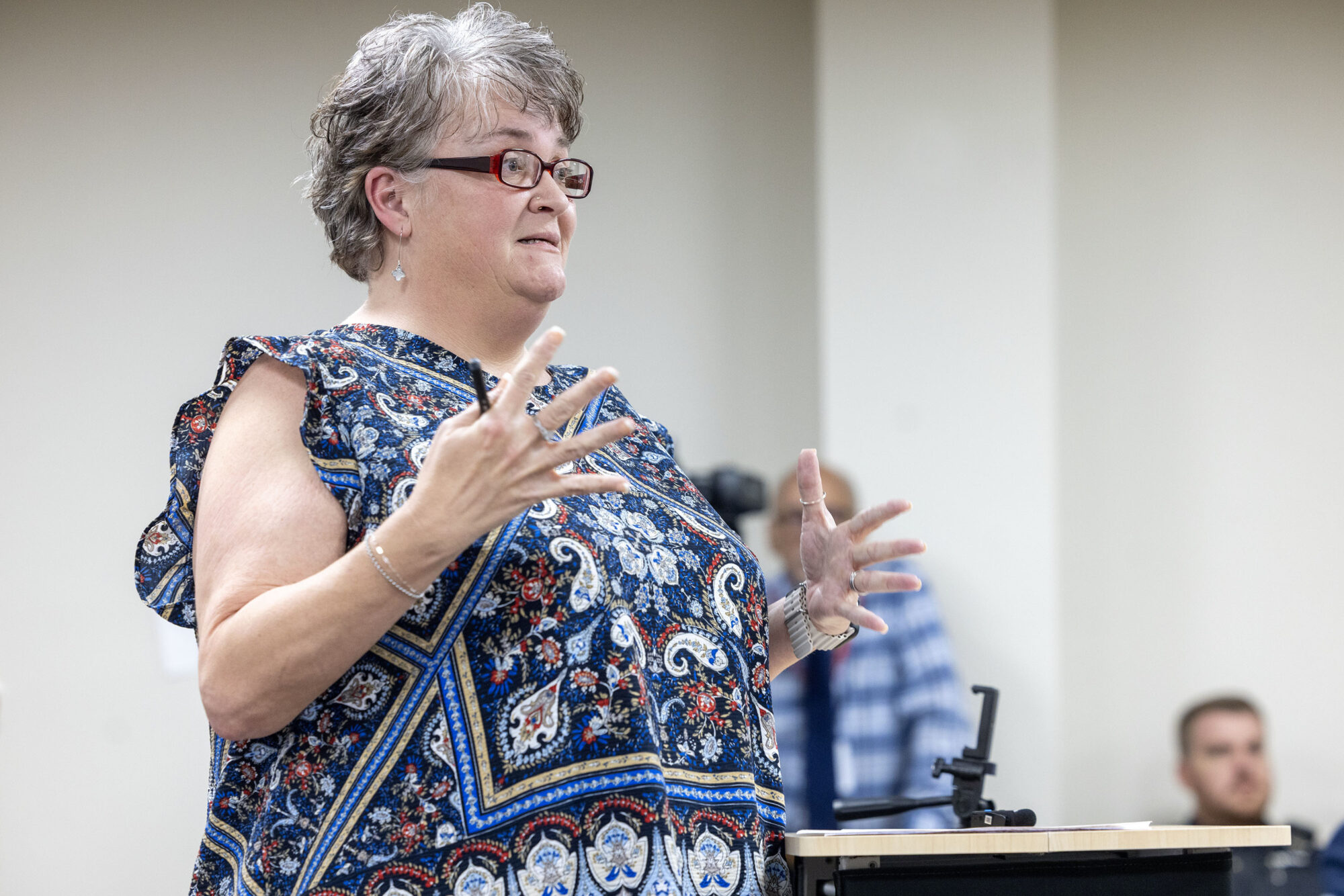
Answering questions from Central District Public Service Commissioner De’Keither Stamps, Vavro said it’s unclear how much the department is worth, adding an engineer’s study would be needed to come up with a number.
Terry, who reminded the PSC he’s only been Holly Springs’ mayor for just over 60 days, said there’s no way the city can afford the repair costs on its own. The city’s median income is about $47,000, roughly $8,000 less than the state’s as a whole.
This article first appeared on Mississippi Today and is republished here under a Creative Commons Attribution-NoDerivatives 4.0 International License.
The post PSC moves toward placing Holly Springs utility into receivership appeared first on mississippitoday.org
Note: The following A.I. based commentary is not part of the original article, reproduced above, but is offered in the hopes that it will promote greater media literacy and critical thinking, by making any potential bias more visible to the reader –Staff Editor.
Political Bias Rating: Centrist
This article presents a factual and balanced account of the situation involving the Holly Springs Utility Department and the Mississippi Public Service Commission. It includes perspectives from various stakeholders, such as city officials, residents, and state commissioners, without showing clear favoritism or ideological slant. The focus is on the practical challenges and financial issues faced by the utility, reflecting a neutral stance aimed at informing readers rather than advocating a particular political viewpoint.
-
News from the South - North Carolina News Feed7 days ago
Reagan era credit pumps billions into North Carolina housing | North Carolina
-
News from the South - Alabama News Feed7 days ago
Amid opposition to Blount County medical waste facility, a mysterious Facebook page weighs in
-
News from the South - South Carolina News Feed6 days ago
South Carolina’s Tess Ferm Wins Miss America’s Teen 2026
-
News from the South - Kentucky News Feed6 days ago
3 states push to put the Ten Commandments back in school – banking on new guidance at the Supreme Court
-
Local News6 days ago
Duke University pilot project examining pros and cons of using artificial intelligence in college
-
News from the South - North Carolina News Feed7 days ago
Powerball surges to $1.8B ahead of Saturday's drawing
-
News from the South - West Virginia News Feed6 days ago
Protesters in D.C. flood the streets demanding an end to Trump’s military deployment
-
News from the South - Virginia News Feed6 days ago
On the record: Winsome Earle-Sears
